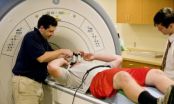(Press-News.org) CAMBRIDGE, Mass. -- By creating a better way to see molecules at work in living brain cells, researchers affiliated with MIT's Picower Institute for Learning and Memory and the MIT Department of Chemistry are helping elucidate molecular mechanisms of synapse formation. These studies could also help further understanding of how synapses go awry in developmental diseases such as autism and Fragile X syndrome. The study will appear in the Oct. 7 issue of Cell.
Using the new technique, which is more accurate and sensitive than existing methods, the researchers found that certain protein-protein interactions can affect early phases of synapse maturation. Their work will help scientists understand exactly how two adjacent neurons form a synapse—the meeting point where information transfer among brain cells occurs. This method provides information on the dynamics of proteins in synapses on a minute-by-minute time scale, the researchers said.
"How nascent contacts mature into excitatory or inhibitory synapses is an area of intense interest," said Amar Thyagarajan, Autism Speaks Postdoctoral Fellow in the laboratory of Alice Y. Ting, associate professor of chemistry. "Trans-synaptic signaling complexes seem like a good place to start looking for clues to this process since they mediate signaling into the pre- and post-synaptic cells during this process."
Study co-authors Thyagarajan and Ting are Picower Institute affiliates.
The researchers studied the interaction of the proteins neurexin and neuroligin on the surface of neurons. These adhesion molecules--two of many in the brain that regulate synapse formation, maturation, function and plasticity--not only function as the "glue" that hold neurons together but also mediate signaling so that the appropriate molecular components are recruited for the pre- and postsynaptic cells.
Neurexins and neuroligins can be thought of as a chemical bridge and communication network that spans the synaptic cleft.
Called BLINC (Biotin Labeling of Intercellular Contacts), the new technique creates a fluorescent signal only when neurexin and neuroligin interact. "The only way for a BLINC signal to occur is when two neurons contact each other," Thyagarajan said.
For a long time, it had been known that neurexins and neuroligins are important for synapse maturation. However, their exact function was unclear since most previous studies used indirect methods such as manipulating gene expression to infer function.
"Our motivation was that if we could come up with a way to directly observe this complex, then maybe we could better understand its function in synapse maturation," Thyagarajan said.
"We developed BLINC to visualize this complex in live synapses in culture. We then used BLINC in different modalities to discover that synaptic activity causes the neurexin-neuroligin complex to grow in size," he said. "This growth is necessary for the recruitment of AMPA receptors to young synapses.
"AMPA receptor recruitment is a hallmark of excitatory synapse maturation, so our study demonstrated how a trans-synaptic complex can affect early phases of synapse maturation," Thyagarajan said.
###
Source: "Imaging Activity-Dependent Regulation of Neurexin-Neuroligin Interactions Using trans-Synaptic Enzymatic Biotinylation," by Amar Thyagarajan and Alice Y. Ting. Cell, 7 October, 2010.
END
WASHINGTON—October 7, 2010—The U.S. invested $139 billion last year in health research from all public and private sources, according to Research!America's latest annual estimate. That amount represents only 5.6% of the $2.47 trillion overall U.S. health spending in 2009—or 5.6¢ of every health dollar—which varies no more than 0.2% from 2005 levels.
The estimate is available here: http://www.researchamerica.org/uploads/healthdollar09.pdf.
The 2009 investment grew by only 0.1% over 2008. This small increase can be attributed largely to the federal stimulus funding ...
NASA satellites have collected data as the Atlantic Ocean's Tropical Depression 17 has undergone two changes in less than 24 hours. Since Oct. 6, the depression has strengthened and has tropical storm-force winds and has morphed from a sub-tropical storm into a tropical storm.
After a United States Air Force Reserve reconnaissance flight subtropical depression seventeen was upgraded by the National Hurricane Center (NHC) to subtropical storm Otto on Oct. 6 at 5 p.m. EDT (2100 UTC). On Oct. 6 and 7, NASA's TRMM and Aqua satellites were flying overhead measuring very cold, ...
Saturn's icy moon Enceladus should not be one of the most promising places in our solar system to look for extraterrestrial life. Instead, it should have frozen solid billions of years ago. Located in the frigid outer solar system, it's too far from the sun to have oceans of liquid water -- a necessary ingredient for known forms of life -- on its surface.
Some worlds, like Mars or Jupiter's moon Europa, give hints that they might harbor liquid water beneath their surfaces. Mars is about 4,200 miles across and Europa almost 2,000 miles across. However, with a diameter ...
PHILADELPHIA - Heart muscle cells do not normally replicate in adult tissue, but multiply with abandoned during development. This is why the loss of heart muscle after a heart attack is so dire—you can't grow enough new heart muscle to make up for the loss.
A team of researchers at the University of Pennsylvania School of Medicine describe the interconnections between three-molecules that control fetal, heart-muscle-cell proliferation in a mouse model that will help cardiologists better understand the natural repair process after heart attacks and help scientists learn ...
CHAMPAIGN, Ill. — University of Illinois chemistry professor Alexander Scheeline wants to see high school students using their cell phones in class. Not for texting or surfing the Web, but as an analytical chemistry instrument.
Scheeline developed a method using a few basic, inexpensive supplies and a digital camera to build a spectrometer, an important basic chemistry instrument. Spectrophotometry is one of the most widely used means for identifying and quantifying materials in both physical and biological sciences.
"If we want to measure the amount of protein in ...
An approach pioneered by researchers at North Carolina State University gives scientists new insight into the way silicon bonds with other materials at the atomic level. This technique could lead to improved understanding of and control over bond formation at the atomic level, and opportunities for the creation of new devices and more efficient microchips.
Manufacturers build silicon-based devices from layers of different materials. Bonds – the chemical interaction between adjacent atoms – are what give materials their distinctive characteristics. "Essentially, a bond ...
New Haven, Conn.—A team of Yale University scientists has engineered the cell wall of the Staphylococcus aureus bacteria, tricking it into incorporating foreign small molecules and embedding them within the cell wall.
The finding, described online in the journal ACS Chemical Biology this week, represents the first time scientists have engineered the cell wall of a pathogenic "Gram-positive" bacteria—organisms responsible not only for Staph infections but also pneumonia, strep throat and many others. The discovery could pave the way for new methods of combating the bacteria ...
WEST LAFAYETTE, Ind. - A study by researchers at Purdue University suggests that some high school football players suffer undiagnosed changes in brain function and continue playing even though they are impaired.
"Our key finding is a previously undiscovered category of cognitive impairment," said Thomas Talavage, an expert in functional neuroimaging who is an associate professor of biomedical engineering and electrical and computer engineering and co-director of the Purdue MRI Facility.
The findings represent a dilemma because they suggest athletes may suffer a form ...
(Garrison, NY) The researcher whose revelations about unethical U.S. studies on syphilis in Guatemala in the 1940's led to apologies from the Obama administration last week has written a commentary for Bioethics Forum, the Hastings Center's online publication. She calls for the need to learn from history to better protect human subjects in the developing world.
Susan M. Reverby, a professor at Wellesley College, describes how she unearthed documents about the study by accident while doing research for a book on the Tuskegee syphilis study. The documents, hidden in the ...
Talk about a walk on the wild side: University of Notre Dame researcher Joshua Shrout is co-author of a new paper that shows that bacteria are capable of "standing up" and moving while vertical.
Shrout, assistant professor of civil engineering and geological sciences and a member of the Eck Institute for Global Health, has been studying the surface motility of bacteria since 2004. In 2008, UCLA researcher Gerard Wong suggested that an undergraduate bioengineering senior design group that he was advising track the bacterium Shrout was studying. After some interesting patterns ...



